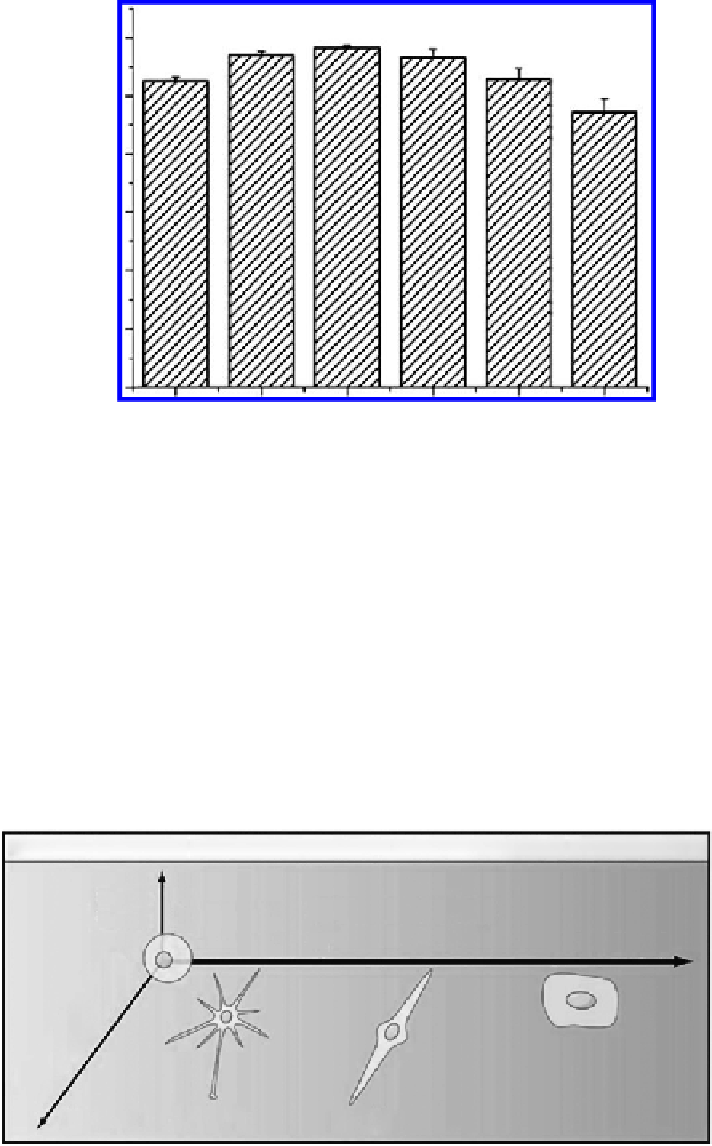Biomedical Engineering Reference
In-Depth Information
∗
∗
∗
0.6
∗
0.5
0.4
0.3
0.2
0.1
0.0
0
0.01
0.05
Concentration of HA (%)
0.1
0.5
1
Figure 9.9
Adhesion of human fibroblasts on chitosan-gelatin-HA film fabricated with different concentrations of HA
solutions.
with a spread phenotype, increased numbers of integrin-ECM bonds, and, in the case of
fibroblasts, stress fibers. Cells migrate from soft to stiff regions of the matrix and may be
most motile at intermediate stiffness [55]. For example, embryonic fibroblasts (NIH 3T3)
undergo more apoptosis and less proliferation on soft as opposed to stiff substrates [56].
Moreover, the matrix also influences stem cell fate, soft matrices (elastic modulus in the
range 0.1-1 kPa) favored differentiation of mesenchymal stem cells (MSCs) into neuronal-
like cells, moderate elasticity (elastic modulus in the range 8-17 kPa) promoted myogenic
differentiation, and a rigid matrix (elastic modulus over 34 kPa) stimulated osteogenic dif-
ferentiation (
cf.
Figure 9.10) [57,58]. Different cells exhibit different cell behaviors on
Factors regulating stem cell fate
Mess
Mesenchymal
stem cell
Soluble
factors
Substrate elasticity
1 kPa (soft)
10 kPa
100 kPa (rigid)
Bone
Lineage:
Neuronal
Muscle
Figure 9.10
Multiple factors can infuence the differentiation of stem cells, including secreted soluble factors, the elasticity
or compliance of the matrix substrate, and the biochemical composition and dimensionality of the matrix.
(From Even-Ram, S., Vira, Artym. V., and Yamada, K. M. 2006.
Cell
; 126: 645-647. With permission.)

Search WWH ::

Custom Search